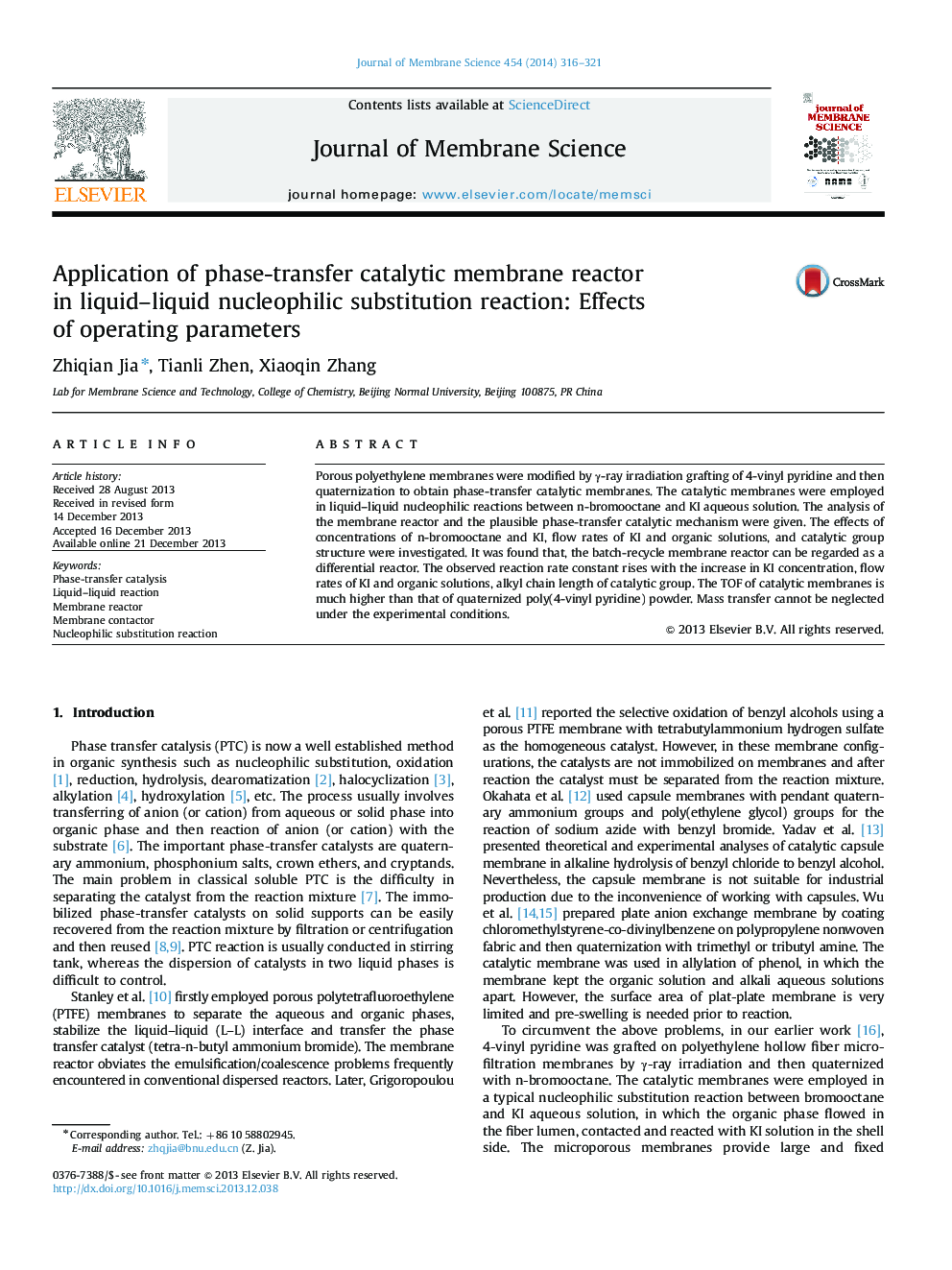| کد مقاله | کد نشریه | سال انتشار | مقاله انگلیسی | نسخه تمام متن |
|---|---|---|---|---|
| 633955 | 1456045 | 2014 | 6 صفحه PDF | دانلود رایگان |
• Phase-transfer catalytic membrane reactor was employed in a liquid–liquid reaction.
• Analysis of membrane reactor was given.
• Effects of concentration, flow rate, and catalytic group structure were investigated.
Porous polyethylene membranes were modified by γ-ray irradiation grafting of 4-vinyl pyridine and then quaternization to obtain phase-transfer catalytic membranes. The catalytic membranes were employed in liquid–liquid nucleophilic reactions between n-bromooctane and KI aqueous solution. The analysis of the membrane reactor and the plausible phase-transfer catalytic mechanism were given. The effects of concentrations of n-bromooctane and KI, flow rates of KI and organic solutions, and catalytic group structure were investigated. It was found that, the batch-recycle membrane reactor can be regarded as a differential reactor. The observed reaction rate constant rises with the increase in KI concentration, flow rates of KI and organic solutions, alkyl chain length of catalytic group. The TOF of catalytic membranes is much higher than that of quaternized poly(4-vinyl pyridine) powder. Mass transfer cannot be neglected under the experimental conditions.
Figure optionsDownload high-quality image (72 K)Download as PowerPoint slide
Journal: Journal of Membrane Science - Volume 454, 15 March 2014, Pages 316–321
